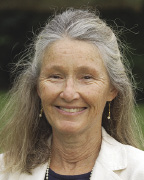Imagine relaxing in the middle of the city in a verdant park, smiling at the spring colors, watching students throw frisbees, or see an artist's sketch emerge on their pad. Maybe you are taking a lunch break from work, or visiting one of the many historic sites in Providence, or rushing from one campus to another across the canals that sparkle from east side to west. The park you are sitting in or walking through appeals to all senses and changes your experience from just getting there to enjoying your life in the city. I am describing the West Side Park in the middle of The LINK, a 5-acre park being built by RIDOT and ready to be enjoyed in spring 2016.
Well maintained, programmed city parks are as much a part of a thriving urban environment as access to transportation choices, workspaces, restaurants, housing and culture. The new urbanism of today means getting out of the car, and increasingly providing a community where one both lives and works. Walking to entertainments, meals and public parks are what young graduates are seeking. Increasingly companies are looking to attract new employees by locating in urban cores that are able to provide such amenities. Providence is walkable, bikeable, a restaurant capital, and has public parks in abundance. The new residents and workers in The LINK and the city overall will have 8 acres of new parkland to act as their backyard, their connection to nature, their lunchtime and evening entertainment.
Parks are economic development. They bring business in and they cause the market value of properties located proximate to them to increase. Central Park in New York was the first large-scale public park in America and commands some of the highest real estate prices in the country. Jason Sheftell writing for the New York Daily News in 2010, called Central Park the world's greatest real estate engine. Between 1997 and 2007, the average value of properties on the blocks adjacent to the park increased 73% faster than those only a block away. Manhattan's High Line and Boston's Rose Kennedy Greenway offer similar examples.
We understand how vital parks are. The LINK has 19 acres of developable land, and another 8 acres set aside for new parks. Today as we are re-knitting areas that had been previously separated by I-195, we are not only reconnecting vibrant neighborhoods but also adding gorgeous parkland to a city already blessed with ample waterfront, walking trails and open space. The landscaped and programmed parks on both the east and west sides of The LINK, as well as a dynamically designed pedestrian bridge have full funding and will be completed in 2015-2016.
In sharp contrast to parks as an economic driver, are parks that are neglected, unsafe, dirty and broken. Parks management is as critical as their creation. The public green spaces in Providence often have multiple owners - including city, state, and private non-profits, each with different budget constraints and different standards of maintenance for such practical concerns as trash pick-up, lighting, grass mowing and snow plowing. Programming brings life to the parks and city but without a unified effort, becomes conflicted or lacks resources to attract audiences.
Increasingly private urban park conservancies are taking on an important role to maintain city parks.
New York City's Central Park Conservancy, a private, not-for-profit organization, was formed in 1980 by a group of concerned citizens determined to improve Central Park. Today, it manages Central Park under a contract with the City of New York. It raises funds, rakes leaves; plants shrubs and flowers; maintains ballfields and playgrounds; removes graffiti; and cares for water bodies and woodlands. The Conservancy offers a variety of educational programs for families, individuals, students and teachers, and has a well organized, popular volunteer program to augment staffing.
Boston's Emerald Necklace Conservancy, a private non-profit stewardship organization founded in 1998, maintains, restores and protects 1,100 acres of parkland in Boston. Governed by a board of directors, the conservancy brings together representatives of both the private and public sectors. Its public partners include the Boston Parks & Recreation Department, Brookline Parks and Open Space and the Massachusetts Department of Conservation and Recreation.
In Providence, the roots of a new conservancy are taking hold. The Downtown Providence Parks Conservancy has begun work on reinventing and redefining Kennedy Plaza, which is located in the City's center. This new conservancy signals the recognition that thriving urban parks are key to a flourishing metropolis. The LINK applauds the efforts of the new conservancy, and is committed to setting in motion the creation of an independent organization that provides a high level of upkeep and programming, that is resourced from city, state, private and volunteer resources, and offers all who love their city spaces that attract and shine.
Jan Brodie is executive director of I-195 Redevelopment District Commission, Providence, R.I.
Tags:









